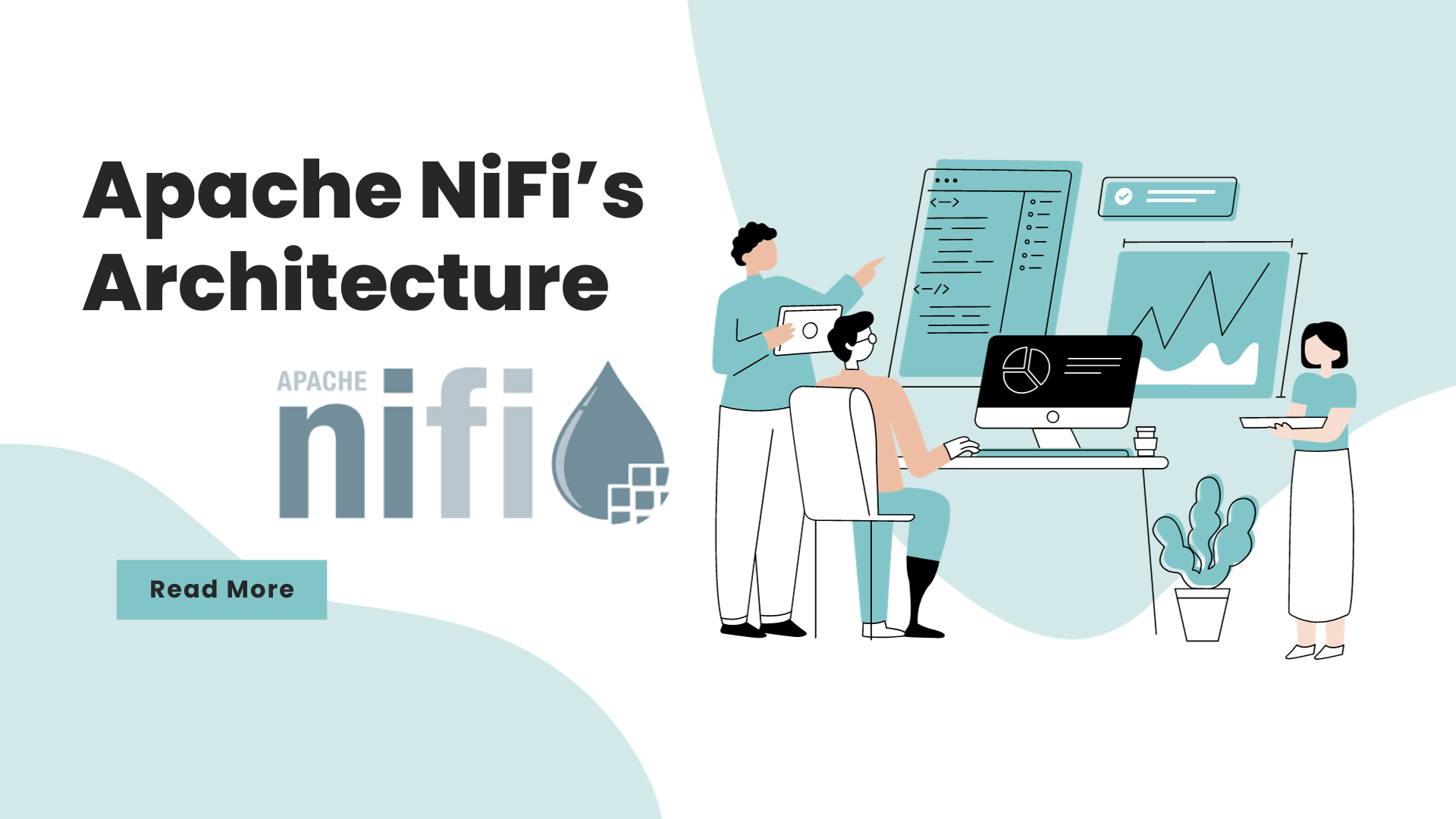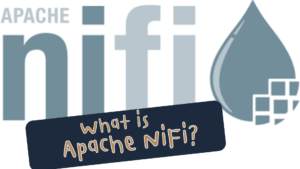In today’s data-driven world, organisations face the constant challenge of efficiently and securely managing vast amounts of data. Apache NiFi, an open-source data integration tool, has emerged as a powerful solution for handling data flow, ingestion, and transformation tasks. In this blog post, we will dive deep into the intricacies of NiFi architecture, shedding light on its components and how they work together to ensure smooth data processing.
Table of Contents
Understanding NiFi Architecture
To comprehend the Apache NiFi architecture, let’s break it down into its core components and explore how they collaborate to facilitate seamless data movement.

1. NiFi Core Components
- NiFi Flow Controller: At the heart of NiFi lies the Flow Controller, which manages the overall data flow by orchestrating the movement of data through various processors, connectors, and queues.
- Processors: Processors are the workhorses of NiFi. They perform actions on data, such as routing, filtering, transforming, and routing data to different destinations. Processors are highly configurable and can be extended to suit specific use cases.
- Connectors: NiFi offers a variety of connectors to interact with external systems and data sources. These connectors enable data ingestion from sources like databases, IoT devices, cloud services, and more.
- Queues: Queues act as buffers to temporarily store data between processors, ensuring efficient data transfer and minimizing the risk of data loss during processing.
- FlowFile Repository: FlowFiles are the fundamental unit of data in NiFi. The FlowFile Repository stores metadata and information about the data flow, including attributes and content.
- Provenance Repository: The Provenance Repository records all actions taken on data within NiFi, providing a detailed audit trail for data governance and troubleshooting.
Data Flow and Control
The Nifi architecture emphasizes data flow as a central concept. It enables users to design and manage data flows graphically through a user-friendly interface. The flow is constructed as a directed acyclic graph (DAG), with data flowing from one processor to another based on defined rules and conditions.
3. Clustering and Scalability
NiFi architecture is designed for scalability and high availability. By setting up NiFi in a cluster, you can distribute data processing across multiple nodes, ensuring load balancing and fault tolerance. This architecture supports horizontal scaling, allowing organizations to handle increasing data volumes without compromising performance.
4. Security and Data Protection
Security is a top priority in NiFi architecture. It offers robust authentication, authorization, and data encryption mechanisms to protect sensitive data throughout the data flow process. NiFi also provides integration with external authentication systems, ensuring seamless access control.
5. Data Provenance and Monitoring
NiFi offers extensive data provenance capabilities, allowing you to trace the path of data and understand how it has been processed. This feature is invaluable for troubleshooting, auditing, and ensuring data lineage.
6. Extensibility and Customization
NiFi’s extensible architecture allows developers to create custom processors, controllers, and reporting tasks to meet specific requirements. This flexibility makes NiFi adaptable to a wide range of use cases.
NiFi Architecture in Action
Let’s explore how NiFi architecture comes to life through a real-world scenario:
Imagine an e-commerce company that needs to process and analyze customer data from various sources, including website logs, mobile app interactions, and social media mentions. Apache NiFi can help streamline this data collection and processing task.
- Data Ingestion: NiFi’s connectors can be configured to pull data from web servers, APIs, and databases. The data is ingested and pushed into the NiFi flow.
- Data Transformation: Processors within NiFi can transform the raw data into a structured format, clean it, and enrich it with additional information.
- Routing and Filtering: NiFi processors can route the data based on predefined conditions. For instance, customer feedback from social media might be routed to a sentiment analysis processor.
- Sentiment Analysis: The sentiment analysis processor assesses the sentiment of customer comments, categorizing them as positive, negative, or neutral.
- Data Storage: Processed data can be stored in data lakes, databases, or cloud storage systems for further analysis.
- Data Reporting: NiFi can trigger reporting tasks that generate reports on customer sentiment trends, which can be useful for decision-making.
Optimizing NiFi Architecture
To make the most of Apache NiFi’s architecture, consider the following best practices:
- Monitoring and Optimization: Regularly monitor the NiFi cluster’s performance and optimize it for efficiency. Identify bottlenecks and fine-tune processor configurations as needed.
- Security: Implement robust security measures to safeguard sensitive data. Utilize encryption, access controls, and authentication mechanisms to protect data at every stage of the flow.
- Scalability: Plan for scalability from the beginning. As data volumes grow, ensure that your NiFi cluster can handle increased loads by adding nodes or resources.
- Documentation: Maintain thorough documentation of your data flows, processors, and configurations. This aids in troubleshooting and onboarding new team members.
- Provenance Data: Leverage NiFi’s provenance data to gain insights into your data flow and for compliance auditing.
- Customization: When necessary, extend NiFi’s functionality by creating custom processors or controllers to meet specific business needs.
Conclusion
Apache NiFi’s architecture plays a pivotal role in enabling organizations to handle data with ease and efficiency. Its modular design, scalability, security features, and extensibility make it a valuable asset in the data integration landscape. By understanding and optimizing NiFi’s architecture, businesses can unlock the full potential of their data, driving innovation and informed decision-making.
In this blog post, we’ve delved into the intricacies of NiFi architecture, highlighting its core components and demonstrating how it can be applied to real-world data scenarios. With the right configuration and best practices, Apache NiFi empowers organizations to achieve seamless data flow, setting the stage for data-driven success.
So, if you’re looking to transform the way you manage and process data, Apache NiFi’s architecture is your gateway to a more efficient and secure data integration journey.
Don’t miss out on the transformative power of NiFi architecture – explore it today and embark on a data-driven future!

